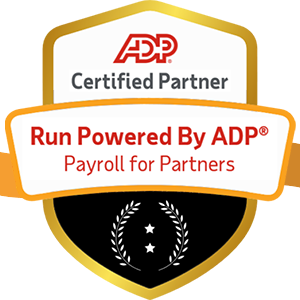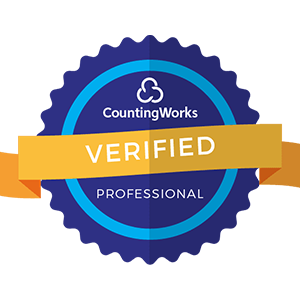
In today's competitive business landscape, a high-performance culture isn't just an advantage—it's a necessity for survival and success.
In today's fast-paced and highly competitive business landscape, organizations are constantly seeking ways to gain an edge over their rivals. While factors such as innovation, technology, and market share play crucial roles in determining success, there is one often-overlooked aspect that can make or break a company's performance: its culture.
A high-performance culture, where HR practices are seamlessly aligned with business strategy, has the power to propel an organization to unprecedented heights. This article explores the key components of high-performance culture, its impact on business results, and the steps organizations can take to cultivate a thriving, success-driven environment.

At its core, a high-performance culture is characterized by a shared set of values, beliefs, and behaviors that drive individuals and teams to consistently deliver exceptional results. It is a culture where every employee is fully engaged, motivated, and committed to achieving the organization's goals. In such an environment, mediocrity is not tolerated, and continuous improvement is the norm.
One of the key distinguishing factors of high-performance cultures is their unwavering focus on results. Every action, decision, and initiative is geared towards achieving specific, measurable outcomes that contribute to the organization's overall success. This laser-like focus on results creates a sense of purpose and urgency that permeates the entire organization, from the C-suite to the front lines.
Another critical aspect of high-performance cultures is the alignment between HR practices and business strategy. In many organizations, HR is viewed as a mere support function, disconnected from the core business objectives. However, in high-performance cultures, HR is a strategic partner, working hand-in-hand with business leaders to develop and implement people practices that directly support the organization's goals.
This alignment is achieved through a deep understanding of the business strategy and a commitment to designing HR initiatives that enable its execution. For example, if the business strategy calls for rapid innovation and agility, HR practices such as flexible work arrangements, cross-functional collaboration, and continuous learning and development become essential. By ensuring that HR practices are in sync with the business strategy, organizations can create a powerful synergy that drives results.
One of the most significant benefits of a high-performance culture is its impact on employee engagement and productivity. When employees are fully invested in their work and feel a strong sense of connection to the organization's mission, they are more likely to go above and beyond in their efforts. They bring their best selves to work each day, driven by a desire to contribute to the organization's success.
This heightened level of engagement translates into tangible business results. Studies have consistently shown that companies with highly engaged employees outperform their peers in terms of profitability, customer satisfaction, and employee retention. According to a Gallup study, companies with highly engaged workforces experience 21% higher profitability and 17% higher productivity compared to their disengaged counterparts.
In today's war for talent, organizations with high-performance cultures have a significant advantage when it comes to attracting and retaining the best and brightest. Top performers are naturally drawn to environments where excellence is valued and rewarded, and where they can continually grow and develop their skills.
A high-performance culture sends a powerful message to potential employees, signaling that the organization is committed to their success and growth. This attracts individuals who are driven, ambitious, and eager to make a meaningful impact. Once on board, these top performers are more likely to stay with the organization long-term, as they find fulfillment in the challenging and rewarding work environment.
In a rapidly evolving business landscape, innovation and agility are essential for staying ahead of the curve. High-performance cultures foster an environment where creativity, risk-taking, and continuous improvement are not only encouraged but expected. Employees are empowered to think outside the box, challenge the status quo, and propose new ideas and solutions.
This culture of innovation and agility enables organizations to quickly adapt to changing market conditions, seize new opportunities, and stay ahead of the competition. By constantly pushing the boundaries and embracing change, high-performance cultures ensure that the organization remains relevant and competitive in the long run.

Cultivating a high-performance culture begins with leadership. Leaders set the tone for the entire organization, and their actions and behaviors have a profound impact on the culture. To foster a high-performance culture, leaders must embody the values and behaviors they wish to see in their employees.
This means consistently demonstrating a commitment to excellence, taking ownership of results, and continuously seeking ways to improve. Leaders must also be willing to make tough decisions, hold themselves and others accountable, and provide the necessary support and resources for their teams to succeed.
Aligning HR practices with business strategy is a critical component of building a high-performance culture. This requires a deep understanding of the organization's goals, challenges, and opportunities, as well as a willingness to adapt HR practices to support the business strategy.
Key areas where HR can make a significant impact include:
Developing a targeted recruitment strategy that focuses on attracting individuals with the skills, experience, and values that align with the organization's culture and goals.
Implementing a performance management system that sets clear expectations, provides regular feedback, and rewards high performance while addressing underperformance promptly.
Investing in continuous learning and development opportunities that enable employees to acquire new skills, stay current with industry trends, and grow within the organization.
Designing a competitive compensation and benefits package that rewards high performance, incentivizes desired behaviors, and aligns with the organization's values and goals.
A high-performance culture is not a destination but a journey of continuous improvement. Organizations must foster an environment where employees are encouraged to constantly seek ways to enhance their skills, processes, and outcomes. This requires a mindset shift from a focus on perfection to a focus on progress.
To create a culture of continuous improvement, organizations can:
In a world where competition is fierce and change is constant, cultivating a high-performance culture is no longer a luxury but a necessity. By aligning HR practices with business strategy and fostering an environment where excellence is the norm, organizations can unleash the full potential of their workforce and achieve remarkable results.
The journey towards a high-performance culture requires unwavering commitment, bold leadership, and a willingness to challenge the status quo. It demands a relentless focus on results, a deep understanding of the business strategy, and a commitment to continuous improvement.
However, the rewards of this journey are immeasurable. Organizations that successfully cultivate a high-performance culture experience higher levels of employee engagement, productivity, innovation, and agility. They attract and retain top talent, outperform their competitors, and create a lasting legacy of success.
The question is not whether organizations can afford to invest in building a high-performance culture, but whether they can afford not to. In a world where the only constant is change, a high-performance culture is the ultimate competitive advantage—the key to unlocking the full potential of your organization and driving remarkable results.


